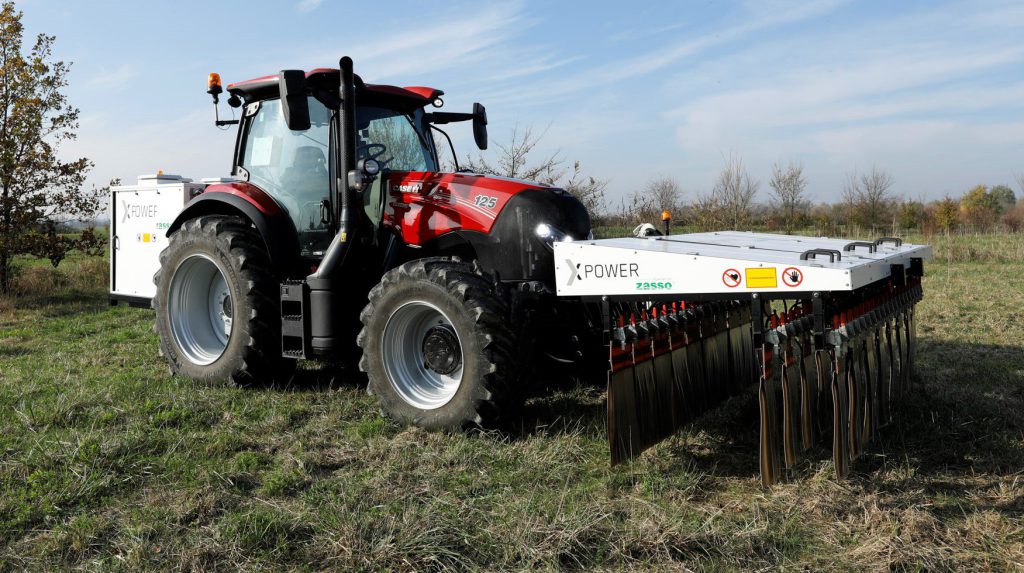To add to its existing Advanced Farming System (AFS) products, Case IH has launched AGXTEND – which includes a system for controlling weeds using electricity.
Initially, Case IH is offering five AGXTEND products. These are:
- A biomass-sensing package that analyses actual plant condition to subsequently calibrate the application of fertiliser;
- Real-time soil-sensing systems that automatically adjust implement working depth to deliver “uniform tillage performance”;
- “Highly-accurate” near infrared (NIR) and sensing systems providing real-time crop data, to enable selection of the “most efficient” machine operating parameters;
- Zero-chemical weed control, through the use of electro-herbicide technology;
- A range of real-time weather sensor data, to facilitate “informed agronomic decision making”.
Mounted on the tractor’s front linkage, CropXplorer (pictured below) uses two “highly-accurate” optical sensors to measure crop biomass.
The data which they collect is then processed, via algorithms, which calculate the crop’s actual nitrogen requirement and then automatically adjust the spreader on the tractor’s rear linkage – so that it applies the right amount.
The unit can be mounted on a standard front three-point hitch or front weight frame. It requires no calibration.
The SoilXplorer (pictured below) sensor or mapper consists of a contactless soil sensor that uses electro-magnetism to measure soil conductivity at four different depths – 0-25cm, 15-60cm, 55-95cm and 85-115cm.
The unit can be mounted on a tractor’s front linkage. It can be used for mapping fields, to record soil heterogeneity and to determine soil-type maps and relative water-content maps.
Secondly, it provides information that determines the presence and depth of compacted areas, so variable-depth soil cultivation can be practiced (with compatible equipment).
Crop/slurry sensor
Meanwhile, the NIRXact crop/slurry sensor can be mounted on combine harvesters and balers. The system uses near infra-red (NIR) technology to measure yield, moisture and crop constituents, including ADF (acid detergent fibre), NDF (neutral detergent fibre), starch, ash and crude fat.
Used on a slurry tanker, the NIRXact sensor enables the amount of nitrogen applied to fields to be monitored and adjusted, by varying the slurry application rate (according to its constituent levels).
‘Electric’ weed control
Xpower (pictured below) – yet another innovation – is a “unique system for controlling weeds using electricity”.
This approach replaces chemicals with electricity for weed control and pre-harvest desiccation of crops. Case IH claims that the system is capable of “completely destroying the plant – right down to the roots”.
It works via direct contact; the effects are apparently visible within just a few hours. Application booms with working widths from 1.2m to 3m are available.
‘Smart’ app
Last but not least, the FarmXtend app is a “smart” weather application, which works with a set of connected, in-field sensors. It apparently allows farmers to monitor in-field weather data – to support decision-making processes on activities such as spraying.




